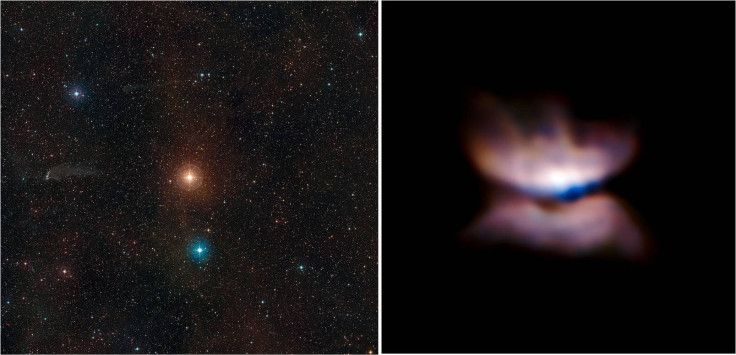ESO Telescope Images Show ‘Celestial Butterfly’ In Great Detail

European Southern Observatory’s (ESO) Very Large Telescope (VLT) has, for the first time, provided images of an ageing star giving birth to planetary nebula, which looks like a butterfly. The images of the star, dubbed “L2 Puppis,” are expected to help astronomers better understand the earliest stage of planetary nebula formation.
According to astronomers, the latest observations were made in visible light using extreme adaptive optics that are capable of correcting images to a much higher degree compared to standard adaptive optics. The instruments allow faint objects and structures near bright sources of light to be observed in greater detail. Researchers explained the new findings in a study, published in the journal Astronomy & Astrophysics on Wednesday.
“The origin of bipolar planetary nebulae is one of the great classic problems of modern astrophysics, especially the question of how, exactly, stars return their valuable payload of metals back into space — an important process, because it is this material that will be used to produce later generations of planetary systems,” Pierre Kervella of the University of Chile and the study’s lead author, said in a statement.
L2 Puppis, one of the closest luminous giant stars to Earth, is located about 200 light-years away. The astronomers examined the new images and found that the dust disc surrounding the star begins about 900 million kilometers (about 560 million miles) from the star. The disc flares outwards, which creates a funnel-like shape surrounding the star.
The astronomers also observed a second source of light, about 300 million kilometers (about 186.4 million miles) from L2 Puppis, which is likely to be another luminous giant star, but with a slightly lower mass. According to the astronomers, the huge dust disc, a slowly dying star and the presence of a companion star are the exact traits of a system expected to create a bipolar planetary nebula.
“These three elements seem to be necessary, but a considerable amount of good fortune is also still required if they are to lead to the subsequent emergence of a celestial butterfly from this dusty chrysalis,” the observatory said in the statement.
© Copyright IBTimes 2024. All rights reserved.






















